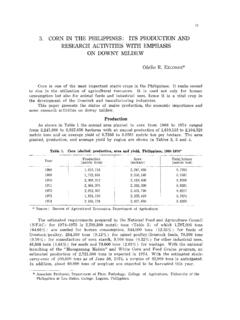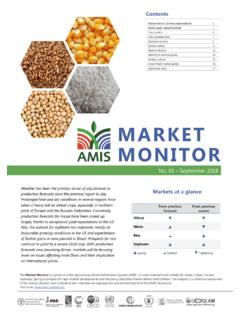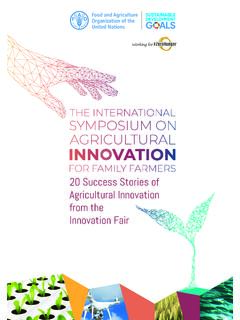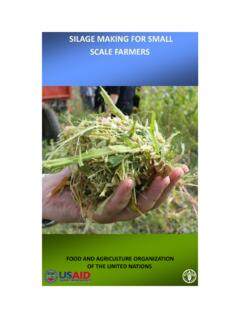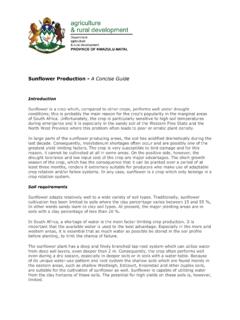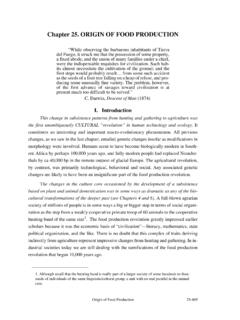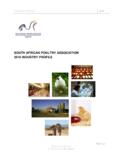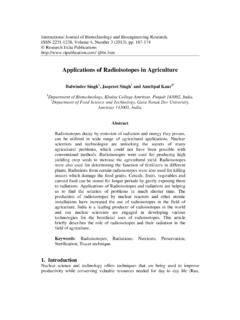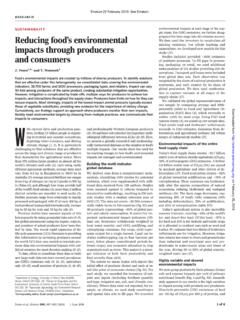Transcription of Small-scale poultry production
1 *44/ '"0 "/*."- 130%6$5*0/ "/% )&"-5)4."-- 4$"-& 106-53: 130%6$5*0/4."-- 4$"-& 106-53: 130%6$5*0/UFDIOJDBM HVJEFNBOVBMFAO ANIMAL production AND HEALTHRome, 20041manual Small-scale poultry production Small-scale poultry production technical guideFOOD AND AGRICULTURE ORGANIZATION OF THE UNITED SonaiyaDepartment of Animal Science Obafemi Awolowo University Ile-Ife, Nigeriaand Swan Village poultry Consultant Waimana, New ZealandSmall-scale poultry production iiiContentsChapter 1 1 Chapter 7 Species and 7 Chapter 13 Feed 13 Chapter 23 General 23 Chapter 37 Incubation and 37 Chapter 41 41 Chapter 59 Breed 59 Chapter 65 production 65 Chapter 69 69 Chapter 85 Research and Development for Family 109 Foreword ivForewordKeeping poultry
2 Makes a substantial contribution to household food security throughout the developing world. It helps diversify incomes and provides quality food, energy, fertilizer and a renewable asset in over 80 percent of rural households. Small-scale producers are however constrained by poor access to markets, goods and services; they have weak institutions and lack skills, knowledge and appropriate technologies. The result is that both production and productivity remain well below potential and losses and wastage can be high.
3 However, adapted breeds, local feed resources and appropriate vaccines are available, along with proven technologies that can substantially improve productivity and income generation. FAO recognizes the important contribution that poultry can make to poverty alleviation and has programmes that focus on Small-scale , low-input, family based poultry production . These programmes target the more vulnerable households especially those affected by natural disasters, HIV Aids and conflict. This manual provides a comprehensive and valuable technical guide for those in government service or aid agencies, wishing to embark on projects that exploit the potential of Small-scale poultry production to improve the livelihoods of the rural poor.
4 All aspects of Small-scale poultry production are discussed in this book including feeding and nutrition, housing, general husbandry and flock health. Regional differences in production practices are described. FAO acknowledges and commends the effort that the authors have put into making such a comprehensive and valuable reference for those involved in poultry production in the developing world. The views expressed are, however, those of the authors and do not necessarily reflect those of FAO.
5 Members of the International Network for Family poultry Development (INFPD) have been involved in producing and reviewing this document and their contribution is also gratefully acknowledged. A major aim of the INFPD is to bring together and disseminate technical information that supports Small-scale poultry producers throughout the world. Small-scale poultry production 1 Chapter 1 IntroductionThe socio-economic Importance of Family poultry Family poultry is defined as Small-scale poultry keeping by households using family labour and, wherever possible, locally available feed resources.
6 The poultry may range freely in the household compound and find much of their own food, getting supplementary amounts from the householder. Participants at a 1989 workshop in Ile-Ife, Nigeria, defined rural poultry as a flock of less than 100 birds, of unimproved or improved breed, raised in either extensive or intensive farming systems. Labour is not salaried, but drawn from the family household (Sonaiya 1990b). Family poultry was additionally clarified as small flocks managed by individual farm families in order to obtain food security, income and gainful employment for women and children (Branckaert, as cited in Sonaiya, 1990c).
7 Family poultry is quite distinct from medium to large-scale commercial poultry farming. Family poultry is rarely the sole means of livelihood for the family but is one of a number of integrated and complementary farming activities contributing to the overall well-being of the household. poultry provide a major income-generating activity from the sale of birds and eggs. Occasional consumption provides a valuable source of protein in the diet. poultry also play an important socio-cultural role in many societies. poultry keeping uses family labour, and women (who often own as well as look after the family flock) are major beneficiaries.
8 Women often have an important role in the development of family poultry production as extension workers and in vaccination programmes. For smallholder farmers in developing countries (especially in low income, food-deficient countries [LIFDC]), family poultry represents one of the few opportunities for saving, investment and security against risk. In some of these countries, family poultry accounts for approximately 90 percent of the total poultry production (Branckaert, 1999).
9 In Bangladesh for example, family poultry represents more than 80 percent of the total poultry production , and 90 percent of the 18 million rural households keep poultry . Landless families in Bangladesh form 20 percent of the population (Fattah, 1999, citing the Bangladesh Bureau of Statistics, 1998) and they keep between five and seven chickens per household. In LIFDC countries, family poultry -produced meat and eggs are estimated to contribute 20 to 30 percent of the total animal protein supply (Alam, 1997, and Branckaert, 1999), taking second place to milk products (38 percent), which are mostly imported.
10 Similarly, in Nigeria, family poultry represents approximately 94 percent of total poultry keeping, and accounts for nearly four percent of the total estimated value of the livestock resources in the country. Family poultry represents 83 percent of the estimated 82 million adult chickens in Nigeria. In Ethiopia, rural poultry accounts for 99 percent of the national total production of poultry meat and eggs (Tadelle et al., 2000). poultry are the smallest livestock investment a village household can make. Yet the poverty-stricken farmer needs credit assistance even to manage this first investment step on the ladder out of poverty.










